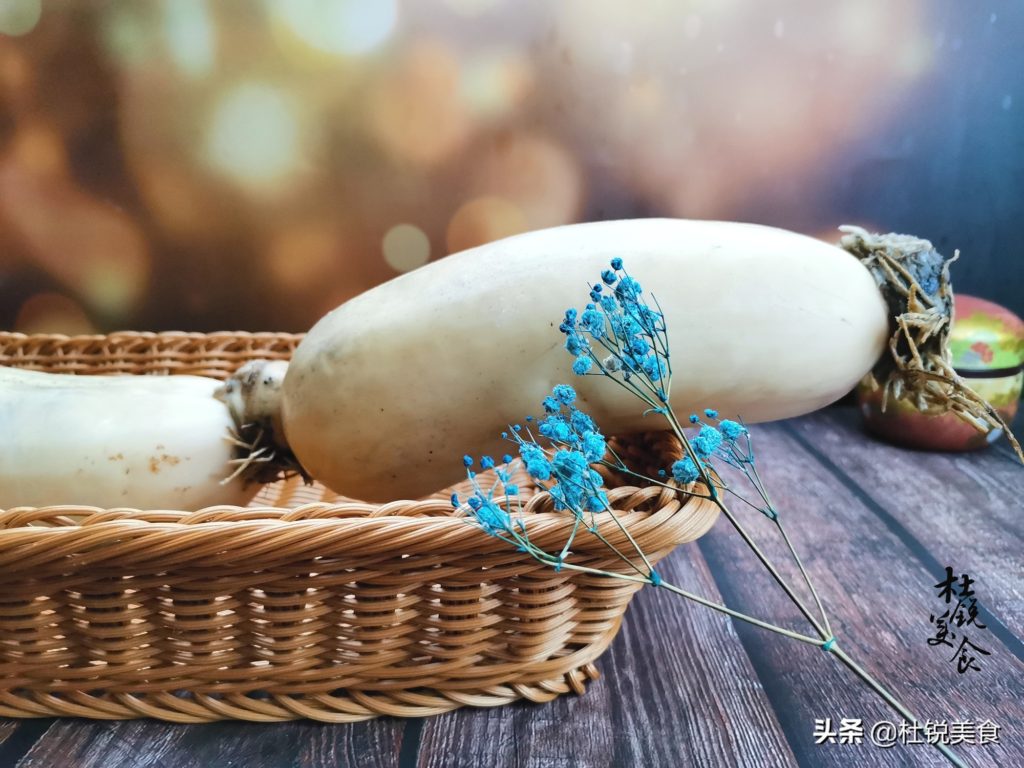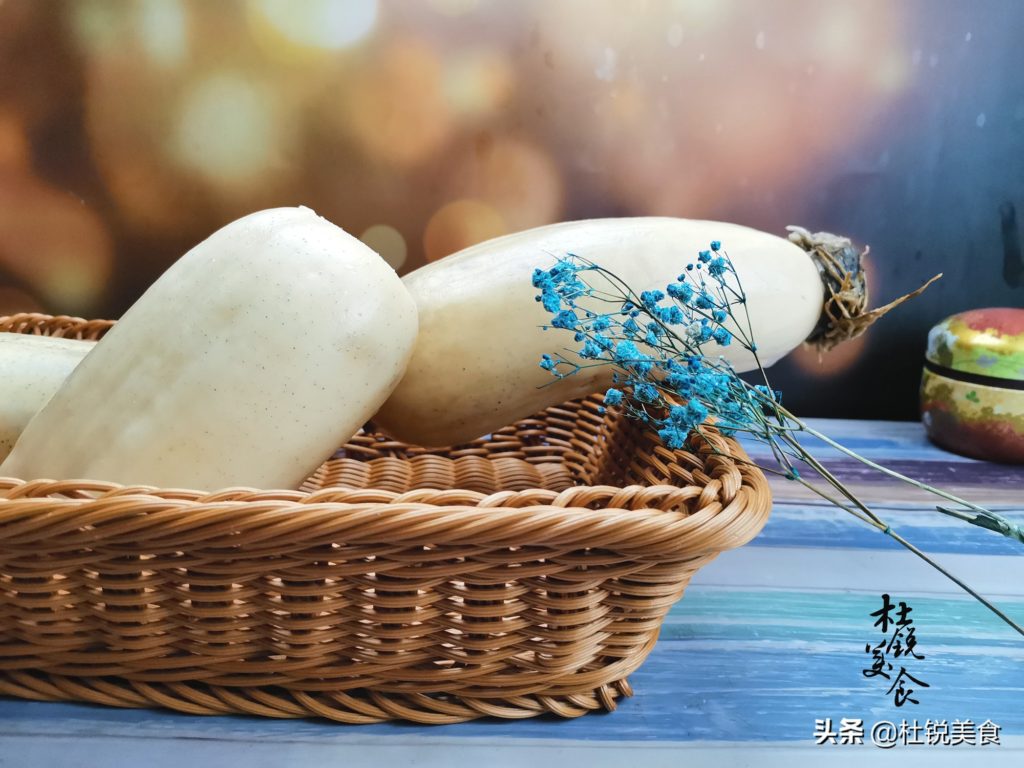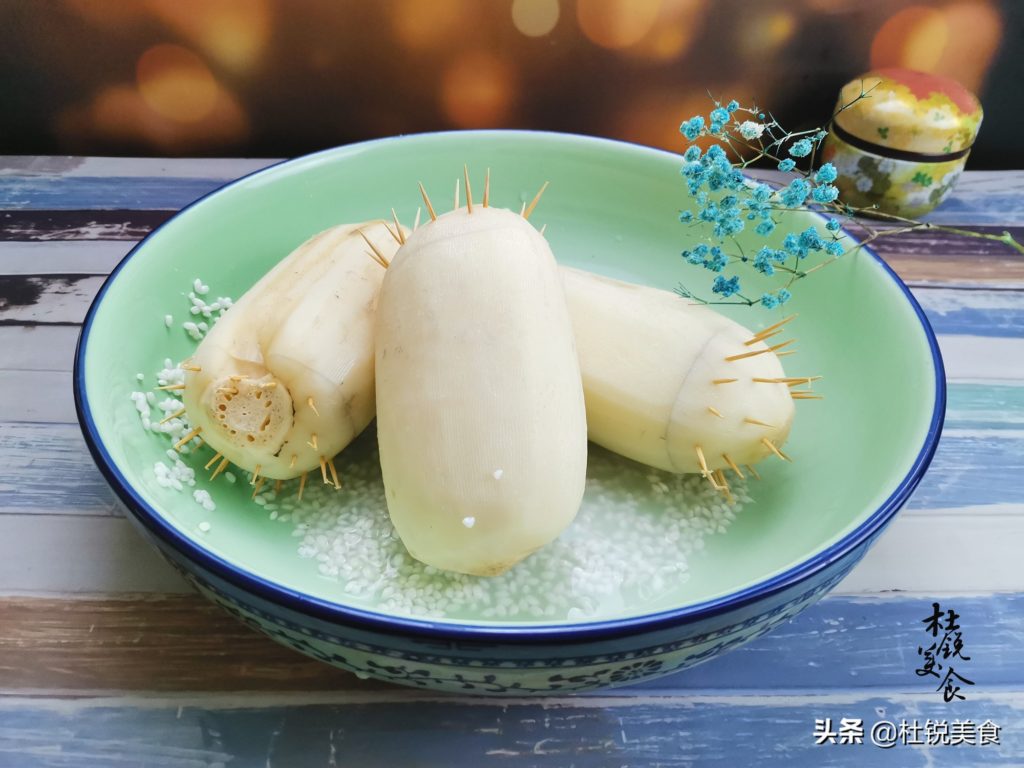👇还没有下载熊猫外卖?扫描二维码即可直接下载👇
满足你的中国胃
There are 7 holes and 9 holes in the lotus root. You can’t use it wrongly. Some people can’t separate it.

Once I went to a friend’s house as a guest, I served a plate of fried lotus root slices and took a bite. I always felt strange, although I added A lot of vinegar, sour taste enough, but not crisp at all. At first, I always thought that my friend’s cooking level was not enough, and he didn’t say anything. Maybe my friend also took a bite, and always felt something was wrong, so he asked me what the problem was with this dish. I asked him if it was too late to put the vinegar in it, which made the lotus root slices not crispy. He said: “It has always been this kind of stir-frying method, which is to put vinegar first, and then stir-fry, every time it is delicious! I don’t know why this time.”

He murmured again inadvertently. It may be that the quality of the lotus root he bought is not good enough. It feels not as big as the lotus root he buys every time, and the color is also a bit dark. I awakened the dreamer with a word, and it suddenly dawned on me that he must have bought the wrong variety. I asked him, is there any lotus root in the kitchen? Followed him to the kitchen and found the cause of the problem! Haha, The lotus root is divided into 7 holes and 9 holes. Some people can’t separate it, but you can’t use it wrong. This time my friend bought a 7-hole lotus root, which is small in size and dark in color. My friend carefully counted it, and it really only had 7 holes.
Generally speaking, the 7-hole lotus root has strong properties and is generally used for soup and stew; the 9-hole lotus root contains relatively little starch and is more brittle, and is mainly used for stir-frying. The main differences between 7-hole lotus root and 9-hole lotus root are as follows:
First, the essence is different

7-hole lotus root and 9-hole lotus root are essentially different. The most significant difference is to count the holes in the middle of the lotus root. There are indeed 7 holes and 9 holes. The biggest difference between 7-hole lotus root and 9-hole lotus root is the starch content: 7-hole lotus root has higher starch content, so the taste is softer and waxy, the fine product has a bitter taste, and the texture is softer, not as good as 9-hole lotus root. The lotus root is crisp. Because the starch content of 9-hole lotus root is much lower than that of 7-hole lotus root, the taste is crisper, the fine product has a hint of sweetness, the texture is very crisp, and sometimes it is good for cold dressing.
Second, different colors

7-hole lotus root and 9-hole lotus root have the best appearance The obvious difference is the color of the flower: The 7-hole lotus root has red lotus flowers, which are bright in color, so it is also called red lotus root. The color inside the lotus root block will also be slightly reddish, and the overall color looks darker and light brown. The 9-hole lotus root has a white lotus, the color is white, so it is also known as the white lotus root. The inner color of the lotus root is white, and the whole looks as white as jade.
Three, different shapes

View in appearance, 7-hole lotus root and The 9-hole lotus root is still quite different: The 7-hole lotus root has a smaller block, because the 7-hole lotus root is a red lotus root, the color looks light brown, slightly yellow, and the inside will also be slightly light red. Because the 9-hole lotus root is a white lotus root, the lotus root looks huge as a whole. Generally, the three-sectioned white lotus root is one meter long. The surface of the 9-hole lotus root is as white as jade, and the inside is as crisp as jade, making it appealing to the appetite.
Four, different purposes

Lotus root is not simply distinguishing 7-hole from 9-hole, but the usage is also very different: 7-hole lotus root is suitable for stewing soup because of its high starch content and soft texture. Especially when stewed with spare ribs, big bones, and meat, the texture is soft, fragrant and soft, elegant and pleasant. Because the 9-hole lotus root contains less starch and has a crisp texture, it is definitely not good for stewing soup, and it has a feeling that it will not be bad. Generally, the 9-hole lotus root is suitable for stir-frying, cold dressing or raw food directly. The taste is crisp, sweet and pleasant.
Fifth, the effect is equivalent

Although the 7-hole lotus root is quite different from the 9-hole lotus root , The taste is also very different; however, the effect is not much different.As the saying goes: Men don’t leave the leek and women don’t leave the lotus root. In winter, female friends still have to eat lotus root to nourish winter dryness and have many benefits to the human body.Lotus root is rich in vitamins, especially vitamin C, and dietary fiber is also quite sufficient. Therefore, some people call lotus root the “scavenger” of the human body. Lotus root is also rich in calcium, phosphorus, iron and other trace elements. It is an economical and effective home-cooked food material suitable for winter consumption. Just be sure to choose the appropriate lotus root varieties according to the different dishes being prepared. There are 7 holes and 9 holes in the lotus root. You can’t use it wrong. Some people can’t separate it. It’s no wonder that the stew is not bad and the fried is not crisp.

Weee! – Asian & Hispanic Groceries, Delivered!
Weee!北美生鲜网上超市 invites you to try Weee!
更多美食制作方法,请参考
www.macaronmagic.com
Jun 22, 2021

A virtual tour of my new book Croissant Dozens. In this book, you will find the secrets for making more than forty mouthwatering croissant dough creations, from the classic pain au chocolat, chausson aux pommes, and kouign-amann to the irresistible snails, from danish-retro reinventions of pinwheels, pockets, turnovers, swirls, and twists to modern-chic creations of mont-blanc, whiskey tarts, apricot hearts, and rose loaves. Finally, whimsical animal-inspired treats will please both the eye and the palate! Croissant Dozens opens new doors for discovering the tantalizing world of croissant pastries. Recipes are accompanied by step-by-step photographs to demonstrate procedures, dimensional diagrams to offer quick references, and photographs of finished works to provide inspiration. So, without further ado, let’s laminate!
About the Author
A former NASA research engineer, Jialin Tian developed a passion for making pastries while she was working on her doctoral dissertation in satellite instrumentation. Since then, the art of pastry making has brought her endless enjoyment. Classically trained, Jialin studied pastry and chocolate art at the prestigious French Pastry School in Chicago. She holds Certified Specialist of Spirits (CSS) and Certified Specialist of Wine (CSW) diplomas from the Society of Wine Educators. She is the author of eight cookbooks and the creative director and publisher at Jayca. Jialin received her PhD in electrical engineering from the Georgia Institute of Technology in 2004. She lives in the greater DC metro area.


